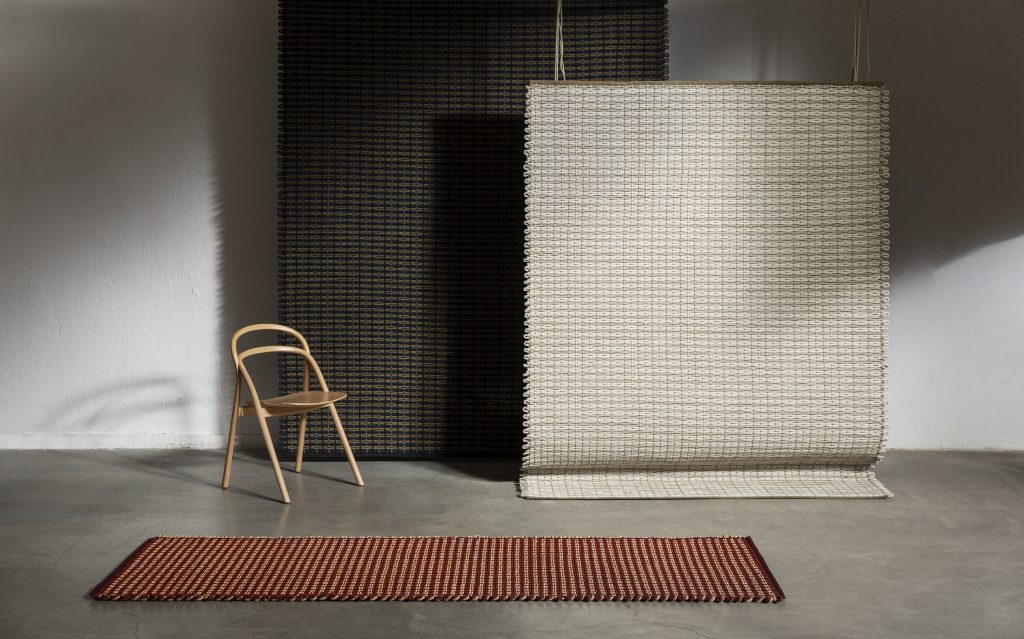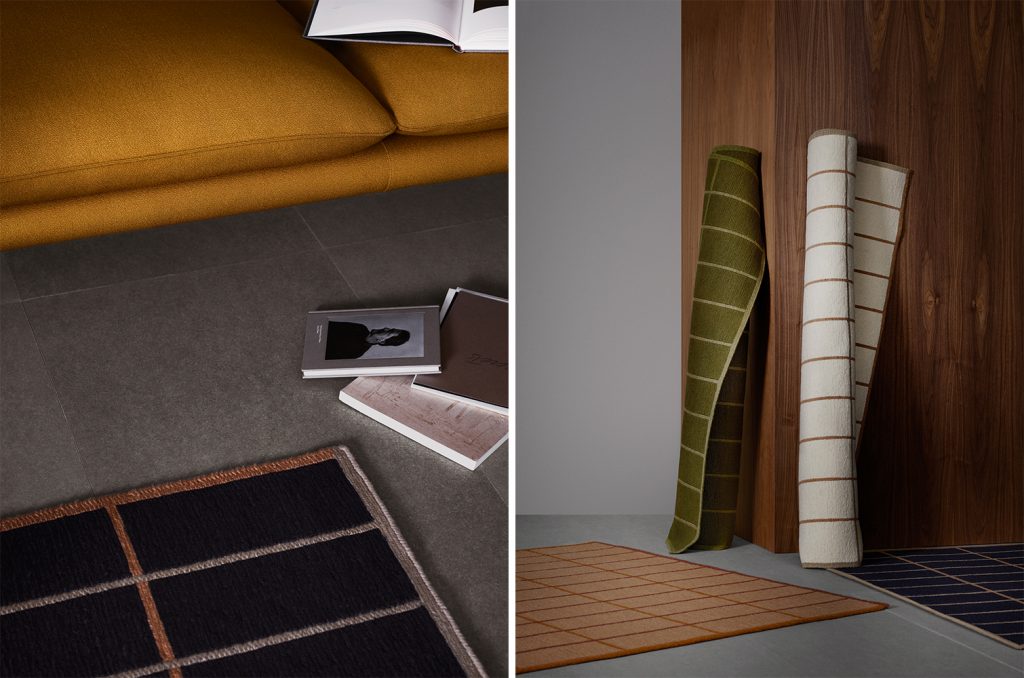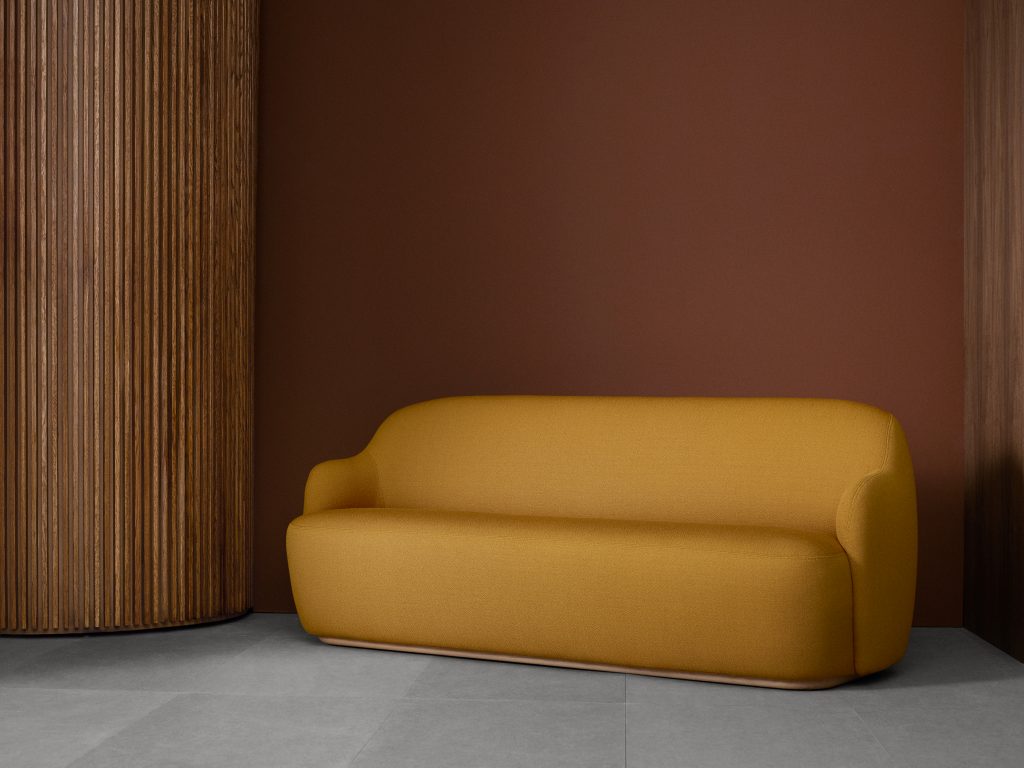Highlights From 2019’s Stockholm Furniture Fair
From retro-influenced style to entirely recyclable and biodegradable materials, some of our picks from the fair

Stockholm Furniture Fair and its off-schedule events (grouped under the name Stockholm Design Week) kicked off 2019’s design calendar amid the chaos of a huge snowstorm. Cold weather aside, there was a sense that this was the year that Stockholm succeeded in curating a world-class design week—with cohesion between the big, glossy Furniture Fair and a vast number of installations and attractions around the city drawing crowds after-hours.
Several themes and objects played hero this year, but the three standouts were rugs, retro influences and environmentally friendly innovations. From the opulent to the borderline kitsch, bold to subdued, some of our highlights are outlined here.

Sweden itself has a long affinity with the rug, and favors its hygienic qualities over carpet, borrowing from Flemmish weaving traditions in the 17th and 18th century. Hailing from the same area, Moooi released a new Nordic Collection with designs from Luca Nichetto, Ingimar Einarsson, Note and Front, whose Walking on Clouds range depicted a hodgepodge of clouds by artists layered into one singular piece. Note’s piece was also interesting, with the studio seeking to create a rug without a “directional” pattern.

The effervescent Hem introduced its first cotton rug, called Rope, by French designer Pauline Deltour. With a contemporary take on Japanese tatami patterns, Deltour’s piece is deep and textural. Plus, it’s available in several earthy colorways.

Another Swedish favorite showing strongly is Kasthall, whose entire business is rugs—and has been since 1889. The firm gave its newly launched rug configurator to the founders of Sight Unseen to take for a test run of sorts. The resulting vibrant colorways are refreshing and bold, pulling Kasthall in a zesty direction.

Fogia is building on its already distinctive range with a piece from Norwegian designer Andreas Engesvik. Ribbon is the first rug the designer has ever made, and the four color options (with simple geometric repeats) are bold but won’t overtake a room. Engesvik simply wanted to make a rug with great materials, woven with care and usable in all scenarios.

Sticking with Fogia and Engesvik’s new sofa and armchair, Barba cements a trio of modern icons by the designer for this Swedish producer in its ascendancy. Barba’s rounded compact form joining the retro elegance of Engesvik’s Tiki and the bombastic Bollo from a couple years ago.

One Swedish group whose name was frequently on the lips of the masses was TAF Studio—part of the Swedish collective that took charge of the revamp of the Swedish National Museum’s restaurant. With pieces at Fogia lifted from the restaurant, a lovely lamp for Muuto and sturdy dining chair at Offecct (also used in the museum restaurant), the studio is clearly in demand. Yet it’s with relatively unknown Korean brand, Mete where TAF stole the show, thanks to the Cane Chair. A well-poised thin metal framed piece, with stunning color options and tone-on-tone detailing proves that good design is always a sum of many parts.

Drawing the crowds in Stockholm’s beautiful center were a host of installations and showroom-specific happenings. The Fenix Palace saw My Residence team up with Ariake and Wästberg, among other selected designers, for a tastefully chosen collection of interior pieces in soft neutrals and blackened tones. The rich visual feast felt premium in every sense from its intelligent curation to sharp styling.

In contrast, vinyl flooring brand Tarkett returned to Stockholm with their chosen collaborators Note, with an installation entitled Snowtopped. Located at the At Six hotel, the installation used Tarkett’s homogeneous vinyl to create a snowscape on the rooftop.

Another site-specific must-see was The Baker’s House by Färg & Blanche. Set in Emma Blanche’s great-great-grandfather’s townhouse from 1889, the pairing showed new pieces inspired by the previous lives of the house, its intricate details and one of its occupants.

BAUX, whose already vibrant, performance-driven acoustic panels (made from waste wood pulp), took an innovative step towards 100% closed-loop production and released a new 100% bio-based acoustic panel. Two years in development by the brand, along with Stockholm-based design studio Form Us With Love and scientists from the Swedish Royal Institute of Technology, the new pulp is made from sustainably harvested Swedish fir and pine, recycled water, non-GMO wheat, potato starch, plant-derived wax, peels from citrus fruits and nothing else. These origami-inspired panels are entirely bio-based, completely recyclable and biodegradable, with zero pollution or waste.
Images courtesy of respective brands











